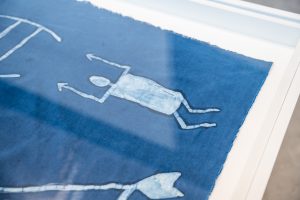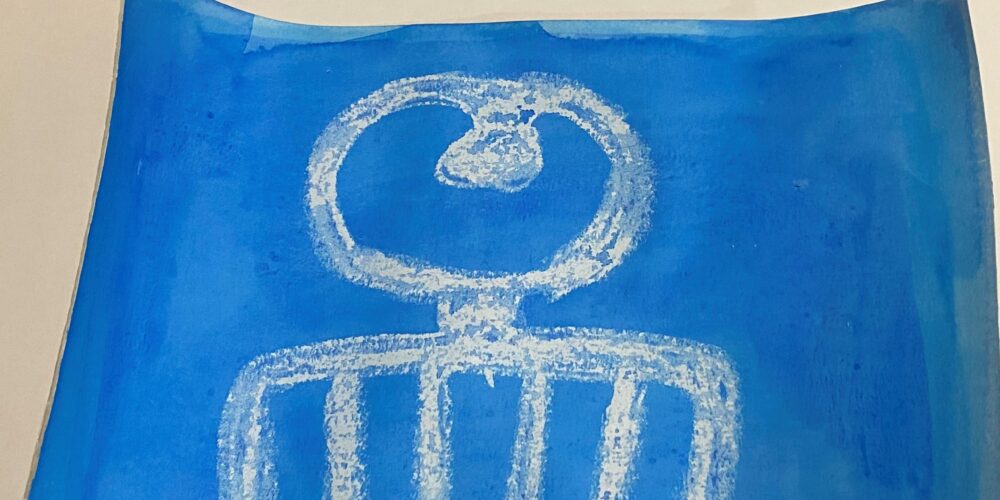In Dread Scott’s Slave Rebellion Reenactment, the artist worked with community members outside of New Orleans to recreate the German Coast Uprising of 1811, the largest slave rebellion in US history. They worked together to create costumes and props, including flags. At the center of one flag is an Adinkra, a Ghanian symbol representing hope, aspiration, and confidence. The other flag draws on the symbolic Ejagham language, Nsibidi, from modern-day southern Nigeria. The flags would have been made of materials that enslaved people of that period would have access to, such as wax and indigo. This activity will use wax resist (oil pastels) and indigo (liquid watercolor) to create your own flag using Adinkra symbols of your choosing.
Ages: 6 years–Adults
Time It Takes: 30–60 minutes
What We’re Going To Do:
- Determine an Adinkra symbol that represents your aspiration
- Use a wax resist technique on paper
You’ll Need:
- Adinkra Symbols Sheet
- White oil pastels or white crayons
- Light blue (recommended) or white paper
- Liquid watercolor, ink, or watered-down acrylic paint (Blue liquid watercolor and ink was used in the example above)
- Paintbrush or paint sponge
Before We Start:
Look at the Slave Rebellion Reenactment performance still and the video of Dread Scott’s Slave Rebellion Reenactment. Do you notice the reenactment actors’ props they are carrying, looking specifically at the flags? One flag is the Adinkra symbol of hope and aspiration. The other flag is of the Nsibidi language, a visual language originating in southeastern Nigeria and Cameroon.


Next, look at the Adinkra Symbols Sheet to see what the symbol means, and what examples of other Adinkra symbols are.
Think About
- What Adinkra Symbols would you use to represent your message of resistance?
- Which symbols do you identify with for a message of rebellion or resistance?
- Do you only need one symbol? Or do you need more than one symbol?
- If using more than one symbol, how will you arrange them?
- The color blue was used because in the 1800s people would have used indigo dyes. What colors would you use to help others identify your movement of resistance?
Art Activity
- Now that you have decided on your symbols, practice drawing them on a piece of paper.
- Once you feel comfortable with your symbols, decide how you will arrange them on your paper. If you are only using one symbol, consider the scale it will take on the page. If you are using more than one symbol, keep spacing in mind.
- Grab a sheet of paper, preferably watercolor paper or heavyweight paper, because we will be using watercolor, ink, or watered-down paint. We recommend using light-blue paper so that you can see the white pastel/crayon more easily.
- Take your white oil pastel/white crayon and draw your symbol(s) on the paper. Make sure you apply firm pressure, as this will act as the resist where the watercolor/ink/paint will not penetrate the paper.
- Now take your watercolor/ink/paint with a paintbrush or paint sponge and apply it over all of the paper. It is okay to go over the oil pastel/crayon because it will resist the watercolor/ink/paint.
- Let it dry.
- Now you have your symbols of resistance—literally and physically!
Terms
- Wax Resist
- Adinkra Symbols
Defiant Rebellion Resist was inspired by the props and materials used in Dread Scott’s Slave Rebellion Reenactment.
